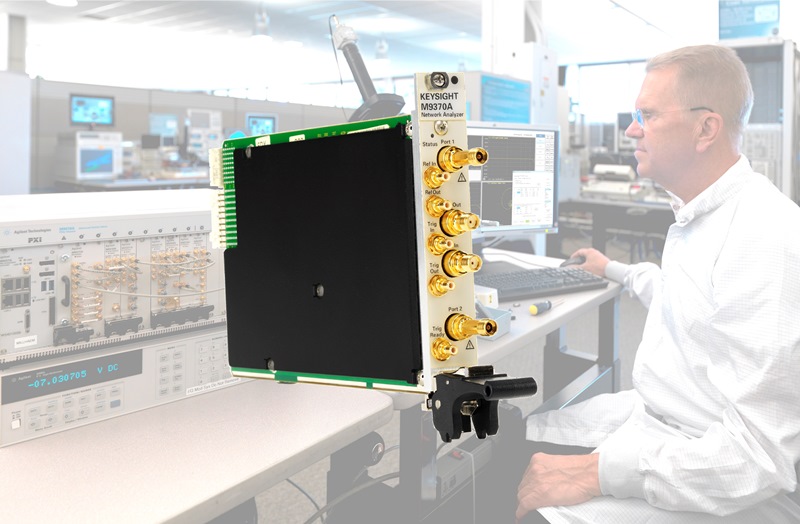Network vector analyzers are typically kept under lock and key in the lab, because they’d bring the price of a small house if sold on the black market. Seriously, VNAs have been among the most costly as well as sophisticated tools used by engineers, and they have been growing in cost and capability, with more and more ports being added every year, as microwave engineering has become a major battleground for high-bandwidth consumer electronics.
For advances in CE, as well as aerospace and defense, to continue, the VNA had to change, to become more available to more engineers. It is undergoing that change this fall, shrinking from a benchtop behemoth to a high-bandwidth single-slot PXI card. And while cost is also decreasing, performance isn’t.

Covering bandwidths between 300 kHz to as high as 26.5 GHz, the M937XA series dual-port PXI VNAs aim to provide the best performance on key specifications such as sweep speed (18 ms across 401 points), trace noise ( 114 dB at 9 GHz, > 110 dB at 20 GHz).
This size/performance enables the PXI VNAs to not only make fast, accurate measurements, but also to reduce the cost-of-test by enabling simultaneous characterization of many two- or multi-port devices using a single PXI chassis. A chassis can be loaded with up to sixteen PXI VNA modules for use as either multiple two-port VNAs, a single 32-port VNA, or any combination in between. Competing PXI VNA products reach only 8.5 GHz, occupy two or three slots, and cost significantly more for that performance level.
Advertisement
Learn more about Keysight Technologies, Inc.





